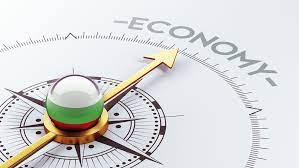Add your promotional text...
India's Economy in FY25: A Return to Trend Growth with Balanced Momentum
Synopsis: India’s economic growth is projected to stabilize closer to its trend rate of 6.5–7% in FY25, driven by strong private consumption, moderating inflation, and balanced growth across sectors. While technical factors may temper growth compared to the previous fiscal year, macroeconomic fundamentals remain robust, according to a recent Crisil Insight report.
VIEWS ON NEWS
By Monika Agarwal
12/16/20243 min read


India’s Economic Landscape: Balancing Growth and Stability
India’s economic growth trajectory for FY25 is steering towards sustainability, with GDP expected to stabilize around its trend growth rate of 6.5–7%, according to a recent Crisil Insight report. This marks a normalization after above-trend growth last fiscal, which was influenced by transient technical factors.
Private consumption, rural demand, and easing inflation are the key drivers propelling the economy forward, ensuring balanced and resilient growth in a post-pandemic environment.
Key Macroeconomic Drivers of Growth
1. GDP Growth Returning to Trend
India’s GDP growth is projected to stabilize closer to its pre-pandemic trend of 6.5–7%.
Historical Context: Over the pre-pandemic decade, GDP growth averaged 6.6%, reflecting the economy’s sustainable growth potential.
Current Fiscal Trends: While last year’s growth was amplified by technical factors, their normalization is expected to moderate GDP growth this year, bringing it in line with historical averages.
2. Private Consumption Growth Accelerates
Private consumption, the backbone of India’s economy, has shown marked improvement this fiscal:
Growth Rate: Private consumption grew at an impressive 6.7% on average in the first half of FY25, up from 4.1% during the same period last year.
GDP Contribution: Its share in GDP stands at 56.3%, slightly higher than the pre-pandemic decade’s average of 56.1%.
This improvement reflects increasing consumer confidence, supported by better rural demand and higher disposable incomes.
3. Investment Growth Remains Strong
Although investment growth has moderated compared to last year, its contribution to GDP remains substantial:
Investment Share: The share of investment in GDP continues to outpace pre-pandemic levels, highlighting sustained infrastructure development and corporate capital expenditure.
4. Inflation Trends Normalize
India’s inflation dynamics have shifted favorably in FY25:
Wholesale Price Index (WPI) Inflation: WPI inflation has stabilized, averaging 2.7% this fiscal, compared to a decline of -0.7% last fiscal.
This is closer to the pre-pandemic 5-year average of 3.2%.
November Inflation Data: WPI inflation eased to 1.89% in November, down from 2.36% in October, aided by a seasonal decline in food prices as fresh crops entered the market.
Stable inflation levels are expected to support purchasing power and sustain demand momentum.
Sectoral Highlights: Driving Balanced Growth
1. Agriculture and Rural Demand
A healthy monsoon season has bolstered agricultural output, setting the stage for improved rural consumption.
Rising rural incomes are anticipated to drive demand for goods and services, ensuring balanced economic growth.
2. Industrial and Investment Activity
Manufacturing and industrial sectors continue to contribute significantly, though at a moderated pace compared to last year.
Infrastructure development and government-led capital expenditure remain pivotal to sustaining investment momentum.
3. Services Sector
The services sector, a key contributor to GDP, is expected to maintain strong performance, driven by increased consumer spending and robust demand for technology and financial services.
Challenges to Watch
While the economic outlook remains positive, a few challenges warrant attention:
Global Headwinds: External factors such as geopolitical uncertainties and global economic slowdowns may impact trade and investment flows.
Urban-Rural Divide: Bridging the disparity between urban and rural demand growth remains a critical focus area.
Inflationary Pressures: Although inflation has stabilized, external shocks or supply-side disruptions could pose risks.
Looking Ahead: A Balanced Growth Trajectory
The Crisil Insight report underscores that India’s economy is poised for balanced growth in FY25:
Growth Momentum: Improving consumption demand, particularly in rural areas, is expected to drive economic activity.
Sectoral Balance: A combination of strong private consumption, sustained investment levels, and stabilizing inflation will ensure that growth is more evenly distributed across sectors.
This year’s growth may be lower than last year’s above-trend levels, but it reflects a return to sustainable expansion that aligns with India’s long-term economic potential.
Strengthening Resilience Amid Normalization
India’s journey toward stabilizing GDP growth at 6.5–7% in FY25 marks a significant milestone in its post-pandemic recovery. Backed by resilient macroeconomic fundamentals, improving rural demand, and controlled inflation, the country’s economy is on a steady path to balanced and sustainable growth.
While challenges remain, the outlook for FY25 reinforces India’s position as one of the fastest-growing major economies in the world, setting the stage for long-term prosperity.
